Bamiyan Valley, Afghanistan
The cultural landscape and archaeological remains of the Bamiyan Valley represent the artistic and religious developments which from the 1st to the 13th centuries, characterized ancient Bakhtria, integrating various cultural influences into the Gandhara school of Buddhist art. The area contains numerous Buddhist monastic ensembles and sanctuaries and fortified edifices from the Islamic period. The site is also testimony to the tragic destruction by the Taliban of the two standing Buddha statues, which shook the world in March 2001.
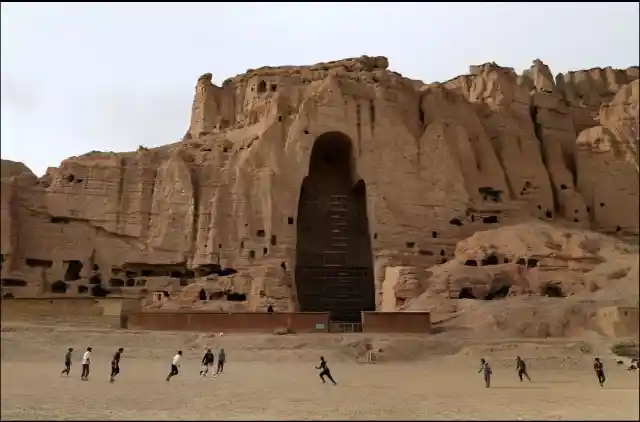
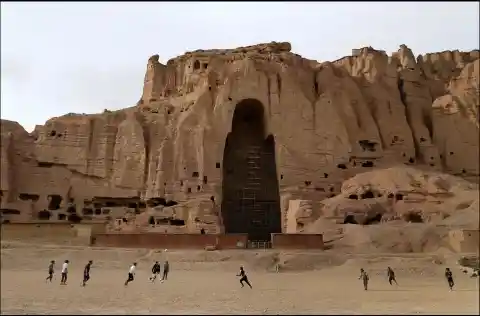
The area is technically public property, and the governor of the Bamiyan area has appointed guards to protect the Buddhas and the surrounding area from vandalism. The safeguarding of cultural heritage is important because it strengthens the sense of national identity. UNESCO uses this as its strategy to help re-establish links between the local population and their cultural history, helping them develop a sense of common ownership of monuments representing their cultural identity.
Rock Art Of Tradart Acacus, Libya
On the borders of Tassili N’Ajjer in Algeria, also a World Heritage site, this rocky massif has thousands of cave paintings in very different styles, dating from 12,000 B.C. to A.D. 100. They reflect marked changes in the fauna and flora and also the different ways of life of the populations that succeeded one another in this region of the Sahara.
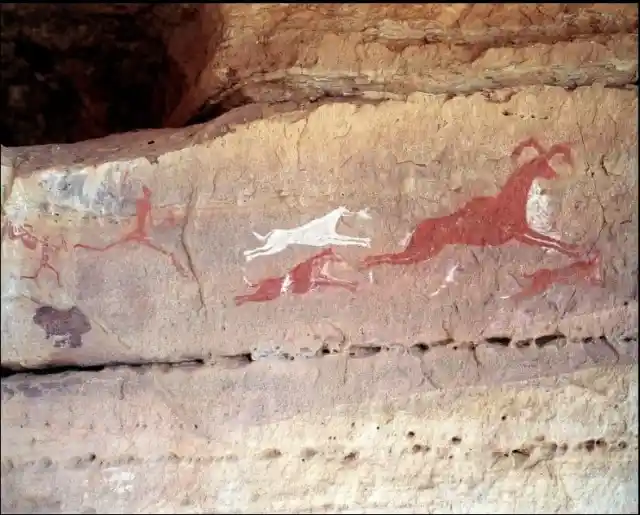
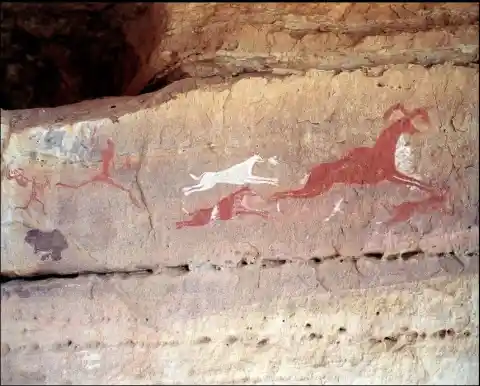
In April 2009, black and silver spray paint graffiti damaged ten sites in Tadrart Acacus, and even more vandalism by spray paint and from the carving of initials into the stone occurred in 2014\. According to records from the World Heritage Committee, they were informed about the damage done to the sites immediately after the acts of vandalism took place. They requested a joint monitoring mission to be conducted at all ten sites where the vandalism occurred.
Old Town Of Ghadames, Libya
Ghadames is an old oasis Berber town in northwest Libya. According to Temehu, there is evidence that this town dates back to Paleolithic times. The Old Town of Ghadames is an example of one of the oldest pre-Saharan cities. Ghadames is known as the pearl of the desert due to its white buildings in the middle of the dark desert sand. These buildings are of particular interest because they are made entirely of mud. This design allows for cool temperatures in the heat of the day, as well as retaining heat during the frigid nights.
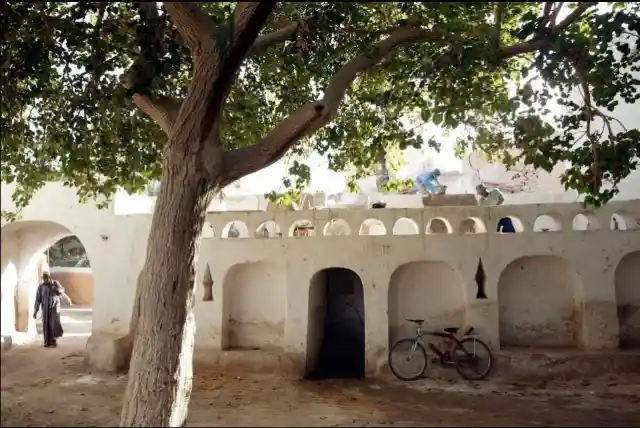
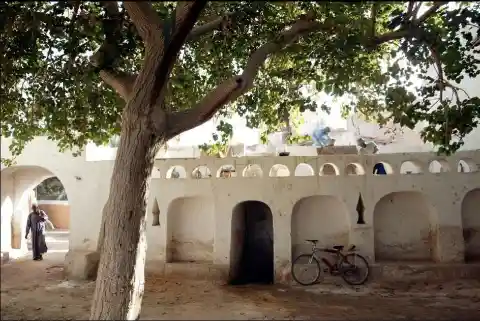
The mass exodus of Ghadames was due to the state of the buildings in the city. Being one of the oldest inhabitable cities in the Sahara, it is understandable that the houses were starting to fall apart. The environment within the city was deteriorating, and houses were falling apart, which caused many to leave. Another factor contributing to the drop in population was that the main water source in the city ran dry. Not only was the water shortage a health concern, but also it resulted in Date trees dying.
Tropical Rainforest Heritage Of Sumatra, Indonesia
The 2.5-million-hectare Tropical Rainforest Heritage of Sumatra comprises three national parks: Gunung Leuser National Park, Kerinci Seblat National Park, and Bukit Barisan Selatan National Park. The site holds the greatest potential for long-term conservation of the distinctive and diverse biota of Sumatra, including many endangered species. The protected area is home to an estimated 10,000 plant species, including 17 endemic genera, more than 200 mammal species, and some 580 bird species.
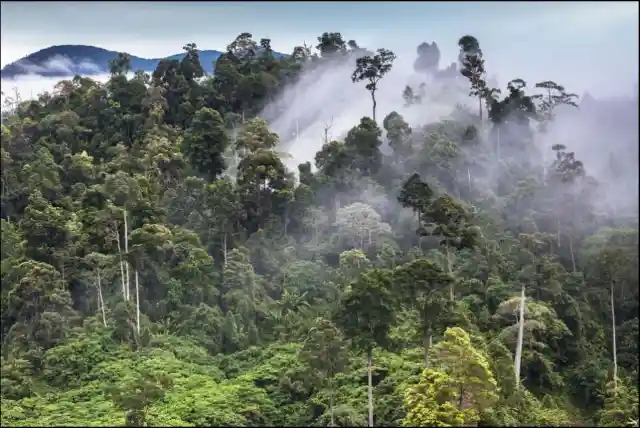

Threats to the integrity of the property include road development plans as well as agricultural encroachment. These threats are directly linked to the access provided by roads and failure to effectively enforce existing laws. The reason behind this is that road access facilitates illegal logging, encroachment, and poaching, which all pose significant threats to the integrity of the different parks.
Historic Centre Of Shakhrisyabz, Uzbekistan
The Historic Centre of Shakhrisyabz, located on the Silk Roads in southern Uzbekistan, is over 2000 years old and was the cultural and political center of the Kesh region in the 14th and 15th century. A collection of exceptional monuments and ancient quarters can be found within the medieval walls, parts of which still remain. The Historic Centre of Shakhrisabz bears witness to the city’s secular development, and particularly to the period of its apogee under the empire of Temur in the 15th century.
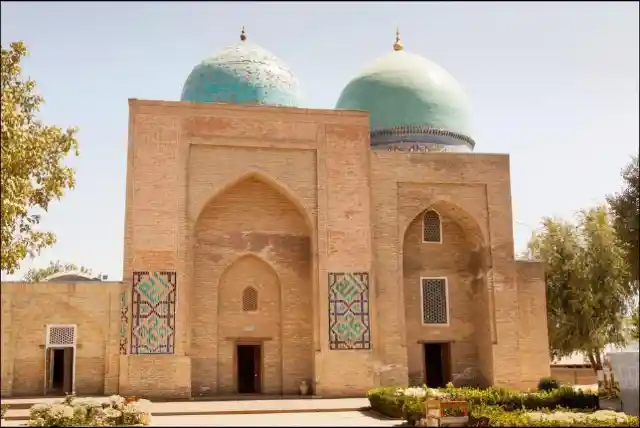

The relevant legislation of the Republic of Uzbekistan provides sufficient protection for the property and regulates the new urban developments in the historical center. The property is managed by the Regional Inspection for Protection and Utilization of Cultural Heritage Sites under the Ministry of Culture and Sports, with the participation of regional authorities. The monitoring of the monuments is being carried out once or twice a year by the Tashkent State Institute of Architecture and Construction.
Samarra Archaeological City, Iraq
The Samarra Archaeological City was the site of a powerful Islamic capital city that ruled over the provinces of the Abbasid Empire, extending from Tunisia to Central Asia for a century. Located on both sides of the River Tigris 130 km north of Baghdad, the length of the site from north to south is 41.5 km, its width varying from 8 km to 4 km. It testifies to the architectural and artistic innovations that developed there and spread to the other regions of the Islamic world and beyond.
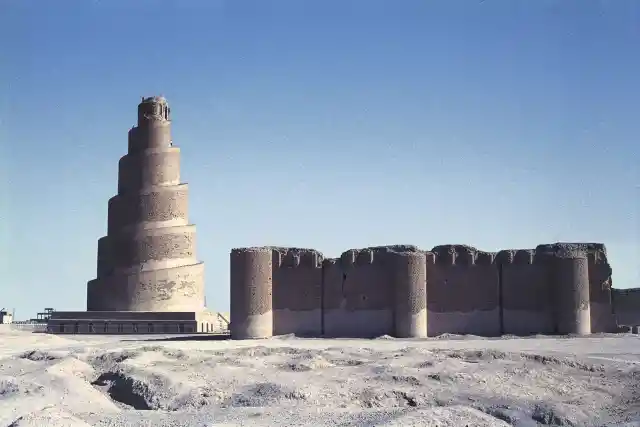
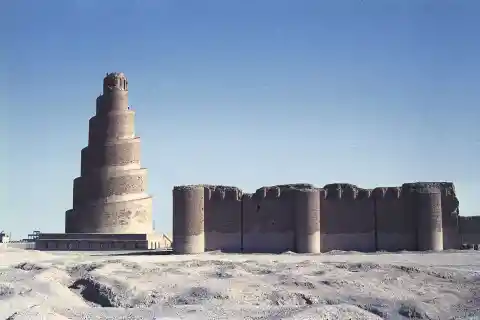
The 9th-century Great Mosque and its spiral minaret are among the numerous remarkable architectural monuments of the site, 80% of which remain to be excavated. However, since the war in Iraq commenced in 2003, this property has been occupied by multi-national forces that use it as a theatre for military operations. Nowadays, this archaeological site is partially preserved, with losses caused mainly by plowing and cultivation. However, the losses have been minor in comparison with other major sites.
Humberstone And Santa Laura Saltpeter Works, Chile
The Humberstone and Santa Laura Works contain over 200 former saltpeter works. On this site, artisans from Chile, Peru, and Bolivia lived in company towns and forged a distinctive communal _pampinos_ culture. Situated in the remote Pampas, one of the driest deserts on Earth, thousands of pampinos lived and worked in this hostile environment for over 60 years, from 1880 onwards. During this period, they processed the largest deposit of saltpeter in the world, producing the fertilizer sodium nitrate that was to transform agricultural lands in North and South America and which produced great wealth for Chile.
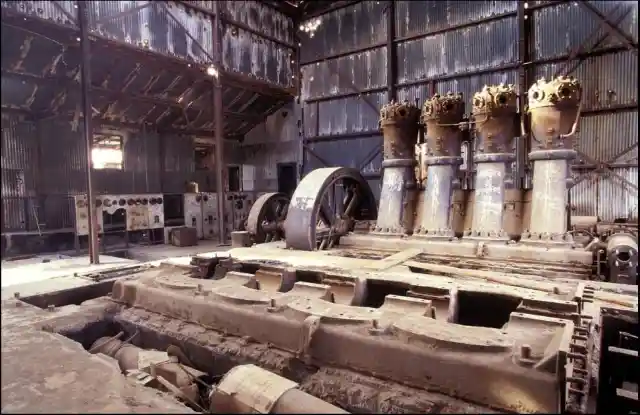
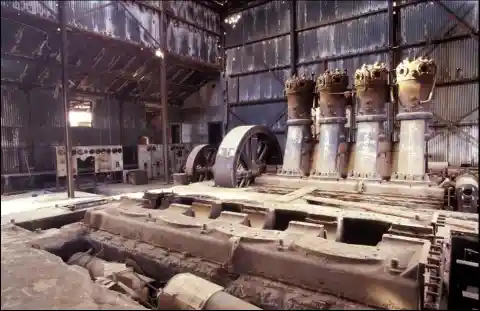
The property is a National Monument in the category of Historic Monument – the maximum level of protection of heritage in this country –. It is administered by a private entity, the Saltpeter Museum Corporation, under the supervision of the National Monuments Council, a state institution responsible for the protection of Chile’s cultural heritage. A 2004-2009 Management Plan was produced and now needs to be updated. In addition, the human and financial resources for its sustained implementation will need to be secured and provided to the Corporation.
Chan Chan Archaeological Zone, Peru
The Chimu Kingdom, with Chan Chan as its capital, reached its apogee in the 15th century, not long before falling to the Incas. The planning of this huge city, the largest in pre-Columbian America, reflects a strict political and social strategy, marked by the city’s division into nine ‘citadels’ or ‘palaces’ forming autonomous units. The monumental zone of around six square kilometers in the center of the once twenty square kilometer city comprises nine large rectangular complexes delineated by high thick earthen walls.
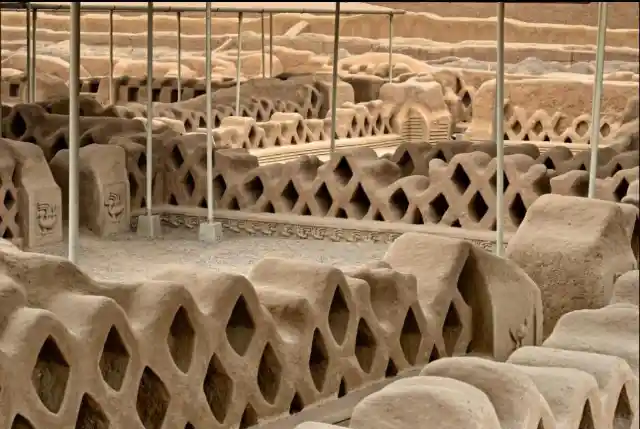
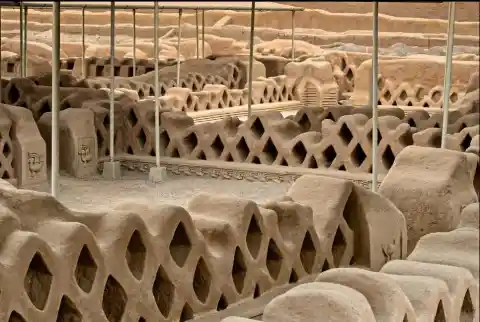
The Ministry of Culture in Peru, through its decentralized office in La Libertad, is the main agency charged with conserving and defending Chan Chan. It collaborates with authorities at the national, regional and municipal levels to implement actions, particularly concerning illegal occupations of the property. The property is protected by national laws and decrees. However, long-standing issues, such as land tenure, relocation of illegal settlers, ceasing of illegal farming practices and enforcement of the regulatory measures have yet to be effectively resolved to ensure the long term conservation and full protection of the property.
Ancient City Of Damascus, Syria
Founded in the 3rd millennium B.C., Damascus is one of the oldest cities in the Middle East. In the Middle Ages, it was the center of the flourishing craft industry, specializing in swords and lace. The city has some 125 monuments from different periods of its history: one of the most spectacular is the 8th-century Great Mosque of the Umayyads, built on the site of an Assyrian sanctuary.
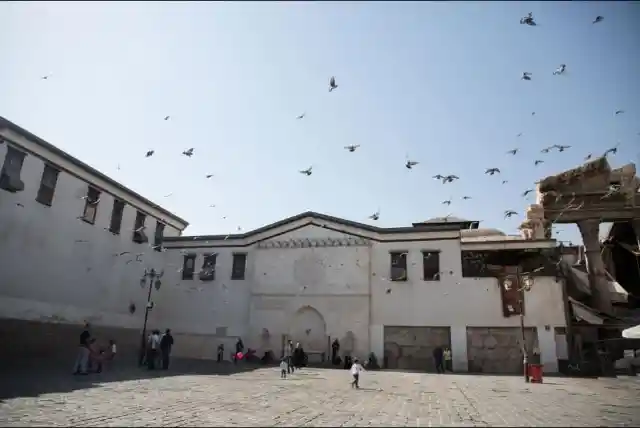
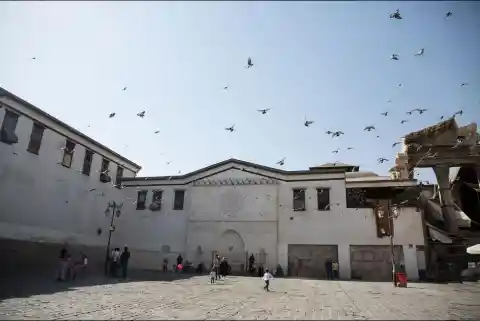
The City of Damascus is under threat by the Syrian Civil War. UNESCO aims to protect its major monuments such as the Umayyad Mosque and other important religious structures. So far, much of Damascus and the Old City have faced relatively little damage. However, some of the suburbs of Damascus have faced heavy damage since this is where most of the fighting between rebels and the government took place.
Aïr And Ténéré Natural Reserve, Niger
The Aïr and Ténéré Natural Reserve is the largest protected area in Africa, covering some 7.7 million hectares, though the area considered a protected sanctuary constitutes only one-sixth of the total area. It includes the volcanic rock mass of the Aïr, a small Sahelian pocket, isolated as regards its climate and flora and fauna, and situated in the Saharan desert of Ténéré. These reserves boast an outstanding variety of landscapes, plant species, and wild animals.
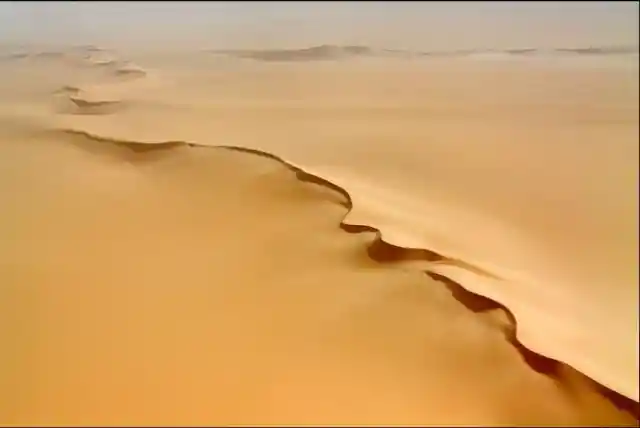

The property was inscribed on the List of World Heritage in Danger in 1992 due to political instability and dissension among the populations. The property benefits from legal protection and satisfactory management, with technical and financial support from the State and development partners. Hunting and exploitation of wood products are forbidden in the Reserve, and access to the Addax Sanctuary is also strictly forbidden.
Minaret And Archaeological Remains Of Jam, Afghanistan
The 65-meter-tall Minaret of Jam is a graceful, soaring structure dating back to the 12th century. Covered in elaborate brickwork with a blue tile inscription at the top, it is noteworthy for the quality of its architecture and decoration, which represents the culmination of an artistic tradition in this region. Its impact is heightened by its dramatic setting, a deep river valley between towering mountains in the heart of the Ghur province.
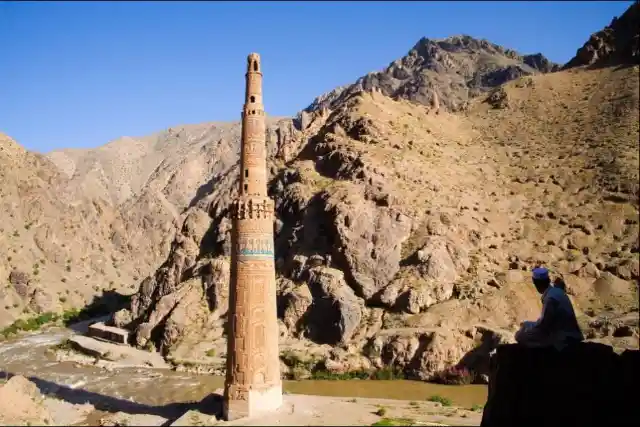

In 2001, the amount of erosion was found to be getting more serious. After UNESCO recognized the Minaret as a threatened site in 2002, groups of scientists and archaeologists came together to try and determine a solution to the problem. In 2012 a UNESCO document was made outlining monitoring plans using 3D scans, hydraulic measures, and other techniques. These plans also included a desire to strengthen support beams and walls.
Belize Barrier Reef, Belize
The Belize Barrier Reef Reserve System is an interconnected system comprised of seven marine protected areas located along the length of the barrier reef. It is the largest barrier reef in the Northern hemisphere and represents all the main reef and coastal habitats, including rare littoral forest on sand cays.


There are also offshore atolls, mangrove forests, coastal lagoons, and estuaries in this area. The system’s seven sites illustrate the evolutionary history of reef development and are a significant habitat for threatened species, including marine turtles, manatees, and the American marine crocodile.
East Renell, Solomon Islands
East Rennell makes up the southern third of Rennell Island, the southernmost island in the Solomon Island group in the western Pacific. Rennell is the largest raised coral atoll in the world, measuring 86 km long and 15 km wide. The site includes approximately 37,000 hectares and a marine area extending three nautical miles to sea. A major feature of the island is Lake Tegano, which was the former lagoon on the atoll. This lake, the largest in the insular Pacific, is brackish and contains many rugged limestone islands and endemic species.
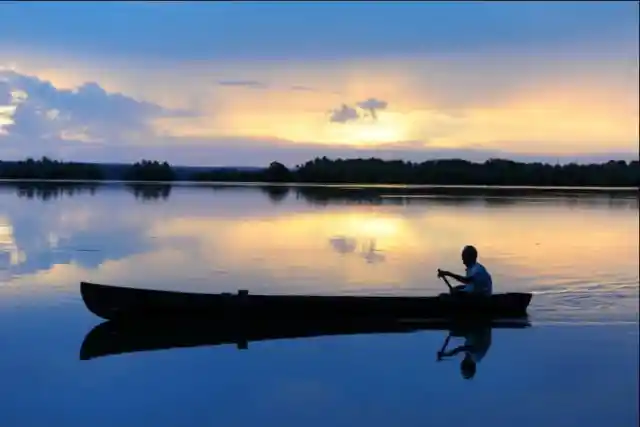

According to Peter Shadie, Deputy Head of IUCN’s delegation to the Committee, “A_dding East Rennell to the list of World Heritage in Danger is a positive step in the face of major challenges to this site, and IUCN sees it as a chance to marshal international support and join forces with the Solomons on a clear action plan to conserve the island’s unique values_.”
Medieval Monuments, Kosovo
The four edifices of the site reflect the high points of the Byzantine-Romanesque ecclesiastical culture, with its distinct style of wall painting, which developed in the Balkans between the 13th and 17th centuries. The Dečani Monastery was built in the mid-14th century for the Serbian king Stefan Dečanski and is also his mausoleum. The Patriarchate of Peć Monastery is a group of four domed churches featuring series of wall paintings.


The World Heritage Committee decided to extend the site of the Dečani Monastery by adding three groups of churches to it: the Patriarchate of Peć Monastery, Gračanica Monastery and the Church of the Virgin of Ljeviša. The site is now to be known as Medieval Monuments in Kosovo. The extended property, mainly dating from the 13th and 14th centuries, was also placed on the List of World Heritage in Danger due to difficulties in its management and conservation stemming from the region’s political instability.
Old City Of Sana'a, Yemen
Situated in a mountain valley at an altitude of 2,200 m, Sana’a has been inhabited for more than 2,500 years. In the 7th and 8th centuries, the city became a major center for the propagation of Islam. This religious and political heritage can be seen in the 103 mosques, 14 _hammams,_ and over 6,000 houses, all built before the 11th century. Sana’a’s many-storeyed tower-houses built of rammed earth add to the beauty of the site.
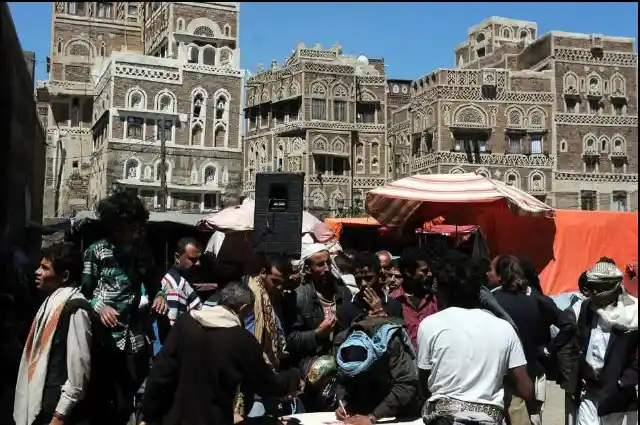
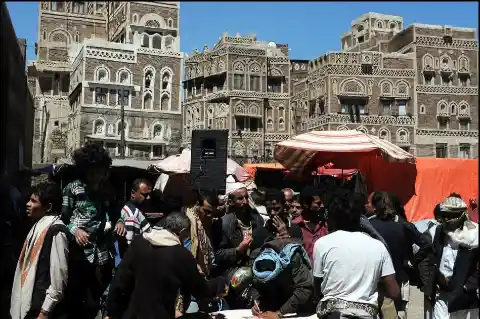
In an attempt to modernize Sana’a, new concrete buildings were put up; however, these buildings became “eyesores” and looked out of place next to the traditional-style houses and buildings. The visual integrity of the property is currently threatened by the development of modern hotels and cell phone towers. New developments have also caused cracking and sometimes even complete collapse of the older traditional houses.
Maritime Mercantile City Of Liverpool, United Kingdom
The World Heritage Committee has placed Liverpool Maritime Mercantile City on the List of World Heritage in Danger due to the proposed construction of Liverpool Waters, a massive redevelopment of the historic docklands north of the city center. The Committee contended that the development would extend the city center significantly and alter the skyline and profile of the site inscribed on the World Heritage List in 2004. Furthermore, experts argue that the redevelopment scheme will fragment and isolate the different dock areas visually.
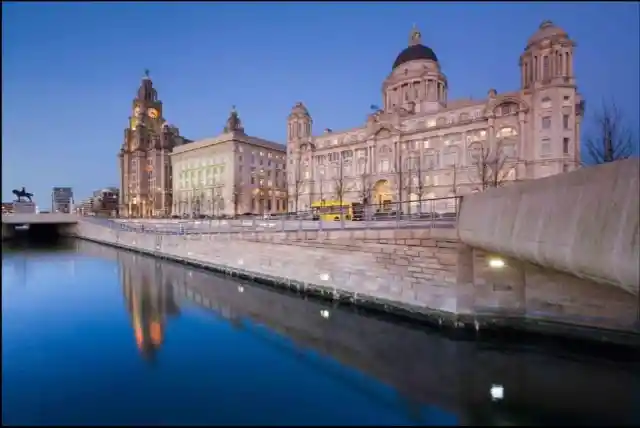

As the human population continues to increase exponentially, development projects such as the Liverpool Docks will keep popping up and threatening World Heritage sites across the globe. The Mayor of Liverpool, Joe Anderson, has welcomed the project by Peel Holdings in order to stimulate growth in the city. At the command of “progress” and “economic development”, or even just from the sheer need to make space for more human beings, our collective cultural heritage will be put in danger.
Tomb Of Askia, Mali
The Tomb of Askia is located along the Niger River in Gao, Mali. It was built in 1495 and symbolized the important phase of Western African History when Gao became the capital of the Songhai Empire, and Islam was adopted as the official religion in the 15th and 16th centuries. It is also known as the burial place of the great emperor, Askia Mohammad. The Tomb of Askia is now used as a mosque and cultural center for the people that reside in Gao.
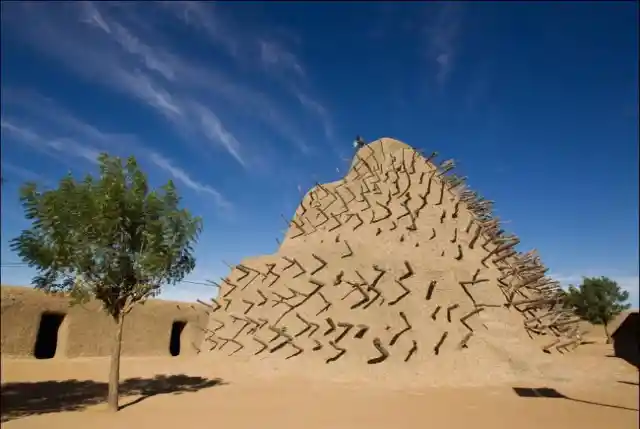

The Tomb of Askia was added to UNESCO‘s list of World Heritage Sites in 2004. It became part of this list because of the destructive environment that has led to the erosion of the tomb, and also due to the conflict that has consumed the city of Gao. From 2002 to 2007, the Tomb of Askia was also included in the Conservation and Management Plan, as well as the African Program in 2009. These policies tremendously improved the conditions of the tomb, but this didn’t help the Tomb of Askia from being put on the list of World Heritage Sites in Danger in 2012.
Virunga National Park, Democratic Republic Of Congo
The Virunga National Park is unique with its active chain of volcanoes and rich diversity of habitats that surpass those of any other African park. Its range contains an amalgamation of steppes, savannas and plains, marshlands, low-altitude Afro-montane forest belts, unique afro-alpine vegetation, and permanent glaciers. The park also features Monts Rwenzori, whose peaks reach a height of 5000 meters.


The property has benefited from the status of National Park since 1925. Its management authority is the Congolese Institute for Nature Conservation (ICCN), a body that has had numerous agents killed on active service. To assure the conservation of the property, the Park must be managed on a scientific basis and possess a management plan.
City Of Potosí, Bolivia
The city of Potosí is located in southern Bolivia at the base of the Cerro Rico mountains. At above 4,000 meters above sea level, Potosí is the most elevated town in South America. The significance of this town can be explained by the fact Cerro Rico, located just outside the city, used to be home to the largest deposit of the silver in the world. Most notably, Spain’s currency and global economic power were a result of the mining of Cerro Rico.

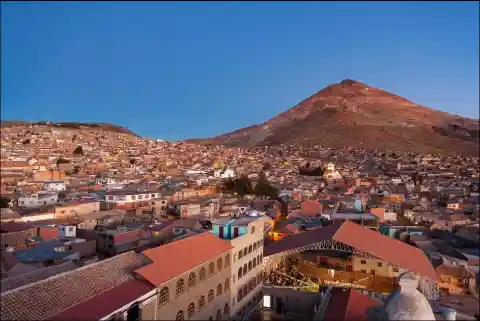
However, this site was added to the List of World Heritage Sites in Danger mainly due to the instability and risk of collapse of the Cerro Rico. But this is not the only reason for the site’s deterioration: it’s also important to mention that there have been deficiencies in conservation, as well as an inefficient enforcement of protective legislation due to continued and uncontrolled mining operations in the Cerro Rico Mountain.
Historic Centre Of Vienna, Austria
The historic center of Vienna has been added to UNESCO’s list of sites in danger due to a high-rise project which according to the Committee, will undermine the area’s value. The project, still in its developmental phase, is set to extend over an area of 6,500 square meters south of the famous 19th century Stadtpark. These plans include a huge hotel, luxury apartments in a high-rise tower, fitness and sports facilities, a new conference venue, and a 1,000-square-meter indoor skating rink.


Vienna developed from early Celtic and Roman settlements into a Medieval and Baroque city and then became the capital of the Austro-Hungarian Empire. It played an essential role as a leading European music center, from the great age of Viennese Classicism through the early part of the 20th century. The historic center of Vienna is rich in architectural ensembles, including Baroque castles and gardens, as well as the late-19th century Ringstrasse. The site had previously been inscribed on the World Heritage List in 2001.
Land Of Olives And Vines, Occupied Territories Of Palestine
Palestine, the Land of Olives and Vines, was inscribed on the UNESCO list in 2014. However, it was added to the list of UNESCO World Heritage Sites in Danger in that same year. This UNESCO-protected area was recognized for its series of agricultural valleys. These valleys are built with stone terraces within the village of Battir, a village that is not far from Jerusalem and is right on the Israel/Palestine border.
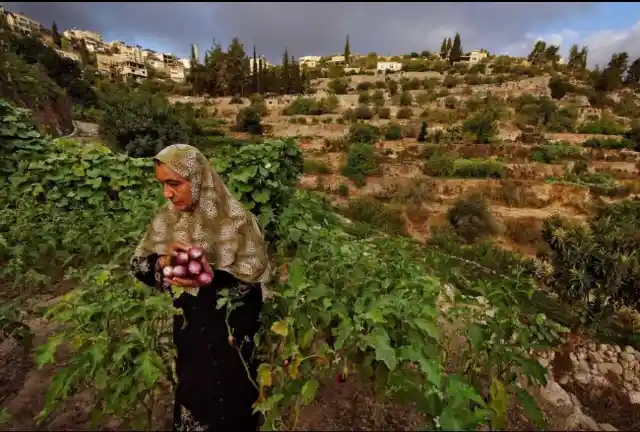
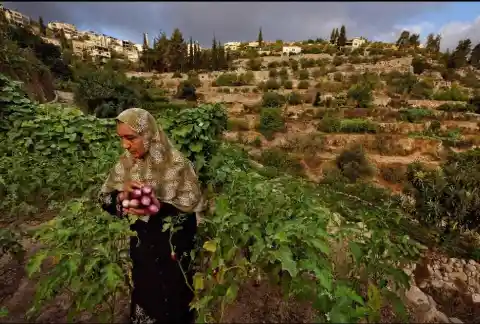
The entire area that is comprised of the UNESCO site is over 348 hectares. However, it has a buffer zone of 623 hectares. The complex irrigation system on the site has enabled the creation of drywall terraces. Archaeological experts believe this method of irrigation has been around since antiquity. The agricultural terraces are of immense cultural value to the region. These terraces served as the basis for agricultural activity in the area through the cultivation of vegetables and olives.
Everglades National Park, United States
The Everglades National Park in Florida is the only natural World Heritage site in America to land on the critically “in danger” list due to human population growth, development, invasive species, and fertilizer drainage. This park is not only listed as a World Heritage site but also as an International Biosphere Reserve and a Wetland of International Importance. It is also protected under the Cartagena Treaty which requires that all of the parties which are part of the convention to take measures to protect and preserve rare or fragile ecosystems.
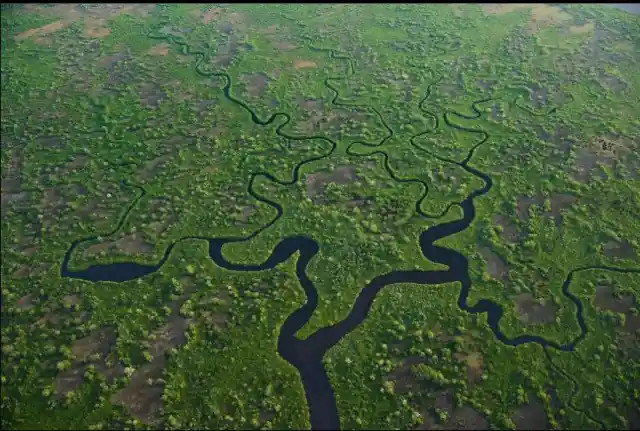

The Everglades' variety of wet habitats have constituted a sanctuary for numerous rare and endangered species. The sea turtle, American Alligator, Florida panther, and Bald Eagle are among several endangered species dependent on the ecosystem that the Everglades provide. In addition, native people have inhabited the Everglades for thousands of years, and the Seminole tribe also depends on the ecosystem for survival.
Old Walled City Of Shibam, Yemen
Surrounded by a fortified wall, the 16th-century city of Shibam is one of the oldest and best examples of urban planning based on the principle of vertical construction. Its impressive tower-like structures rise out of the cliff and have given the city the nickname of ‘the Manhattan of the desert.’ The protection of the Old City of Shibam is ensured by the Antiquities Law of 1997 as well as the building law of 2002.
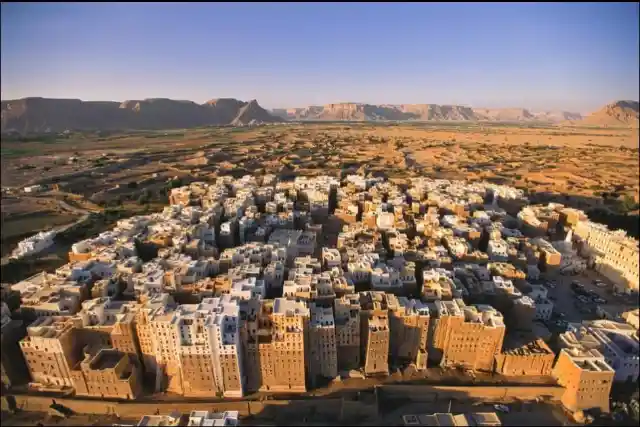

Shibam was added to the list of World Heritage sites in danger on July 2, 2015. One of the main problems that this site faces is the sizeable threat of flood, which could take place at any time and would ruin the integrity and authenticity of the city. The thing is, Shibam is located in a flood plain between two mountains on the edge of a flood wall (similar to a dam). Due to a lack of infrastructure and to the fact that the site is located on a flood plain, heavy rainfall could easily provoke a flood and practically ruin the city.
Old Towns Of Djenné, Mali
The Old Towns of Djenné include four archeological sites with nearly 2,000 houses whose decorative facades have remained intact since the 3rd century BC. The buildings are among the most famous in Mali, a country that also boasts the ancient town of Timbuktu. According to UNESCO, this World Heritage site that features elaborate pre-Islamic mud houses is in danger of deteriorating because it cannot be protected adequately in the face of insecurity.
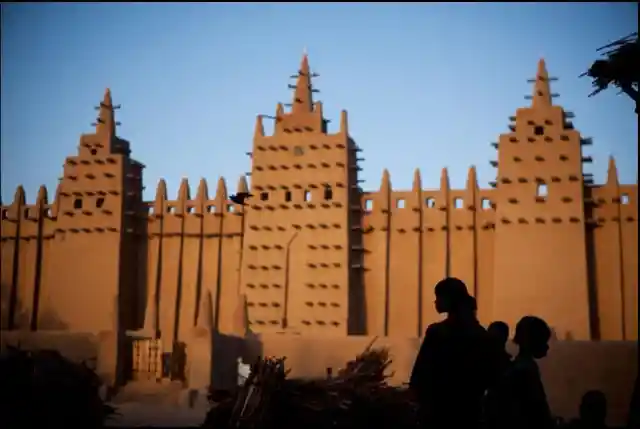
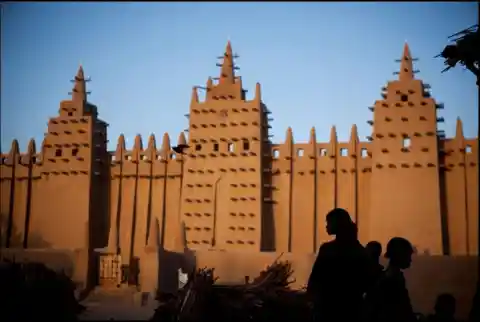
The main two factors endangering Old Towns of Djenné are urbanization in the area, and erosion of the buildings and soil due to heavy rainfall, flooding, and wind storms. The site is also being affected by poor security conditions, civil unrest, and issues with waste disposal. Last but not least, there are no plans to ensure management and conservation. The Old Towns of Djenné do not have distinctive borders around them, so it is difficult to stop the neighboring and growing towns from intruding into the archaeological sites.
Nan Madol, Micronesia
Nan Madol is a series of more than 100 islets off the southeast coast of Pohnpei that were constructed with walls of basalt and coral boulders. These islets harbor the remains of stone palaces, temples, tombs and residential domains built between 1200 and 1500 AD. Through its archaeological remains, Nan Madol is tangibly associated with Pohnpei’s continuing social and ceremonial traditions and the authority of the Nahnmwarki.
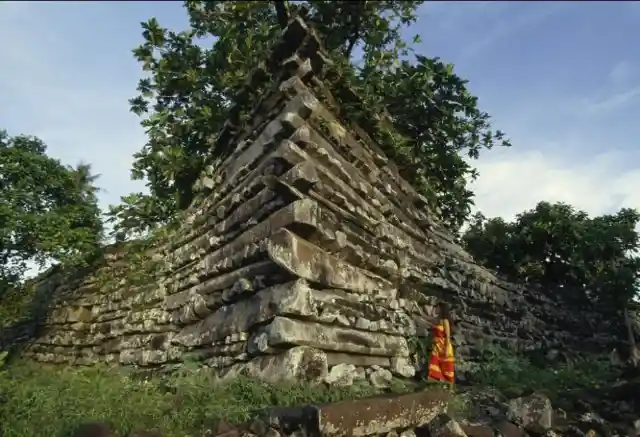
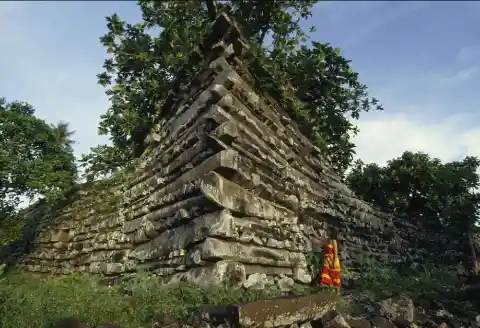
Augustine Kohler of the FSM’s Department of Historic Preservation says that Nan Madol was listed on the U.S. Registry of Historic Sites several years ago. He has also stated that Nan Madol’s inclusion on the danger list would enable the World Heritage Committee to allocate funds to help protect the site. It would also alert the international community who might contribute funds or technical expertise to save such an endangered site.